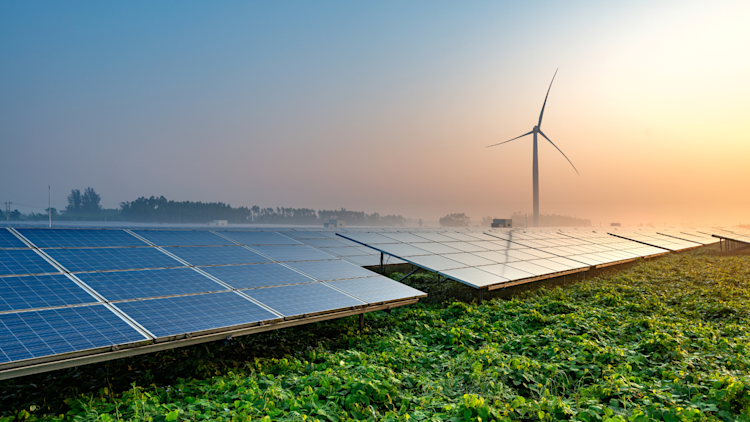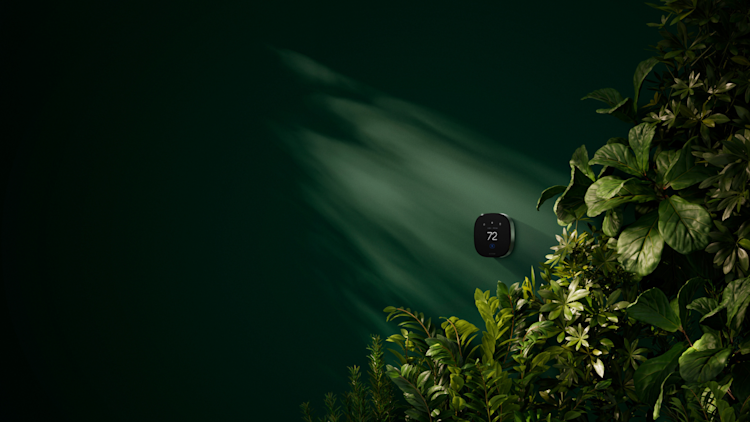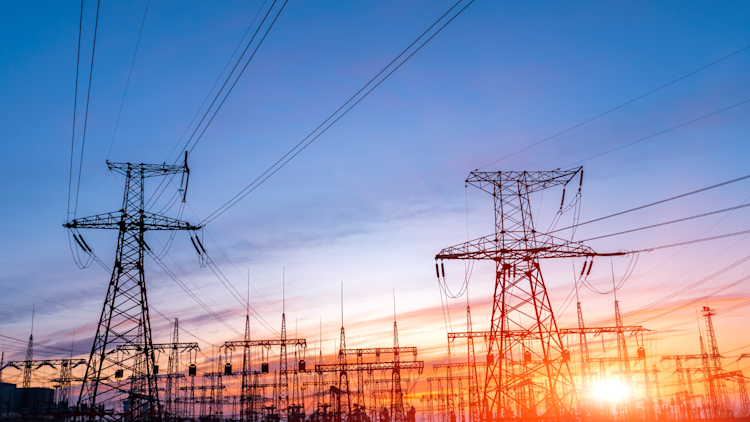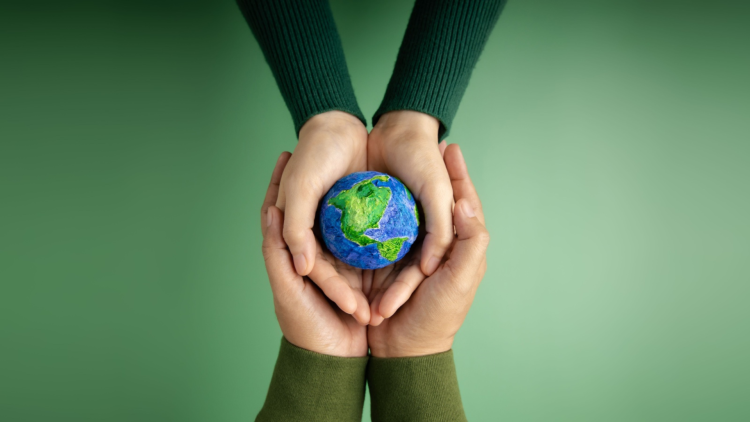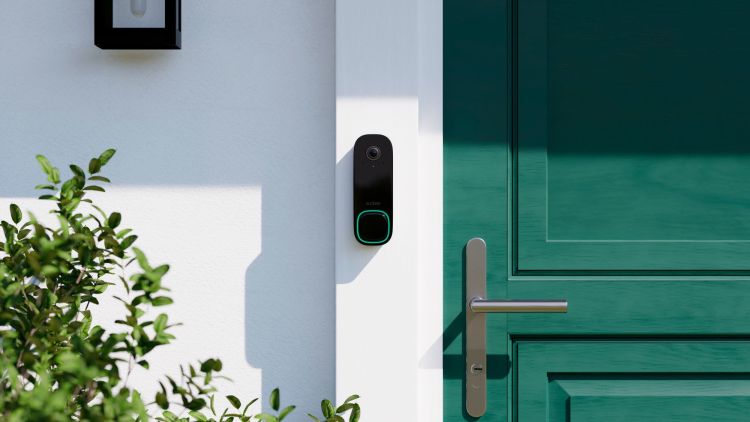How ecobee is Making its Packaging More Sustainable
ecobee Citizen traces the company’s ongoing efforts to make ever-more planet-positive packaging.
by ecobee on 04/18/2024 in Better Planet
10 min read
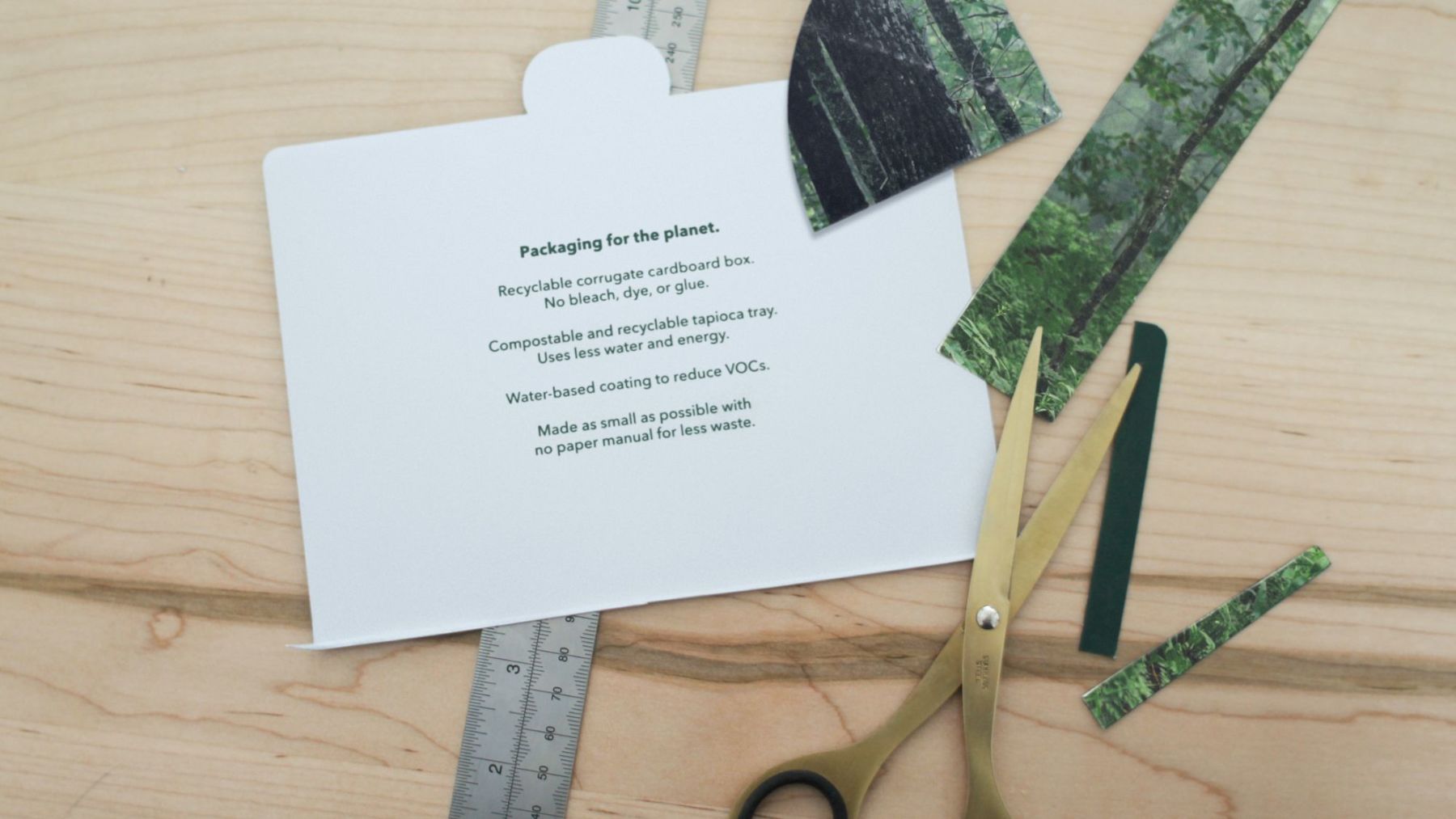
ecobee’s mission is to improve everyday life while creating a more sustainable world. This is part of a series of stories examining how we’re staying true to our principles as we grow.
Packaging is essential and can even be wonderful. It protects our products during shipping, tells us what’s inside, can enable a joyous unboxing experience, and helps us get started. However, the overuse of packaging and non-recyclable materials also raises difficult questions about the kind of planet we’re leaving for future generations.
ecobee has always been thoughtful about what we can do to protect the environment. Our whole product lineup is a testament to that. But it wasn’t until more recently that the packaging we use to deliver our products received the full scrutiny of our company’s environmental mission. Prior to that time, much of the packaging design was outsourced to a third party. It was functional, served its purpose well, and was sometimes even beautiful. However, it became clear as we analyzed the environmental impact of our packaging that we could do better.
The ah-ha moment came several years back with the release of our smart thermostat product, SmartThermostat with voice control. The box it came in was stunning. It was ecobee’s most visually striking packaging yet, sleek, and esthetically pleasing. It was also more eco-friendly than much of the smart thermostat packaging on the market at the time.
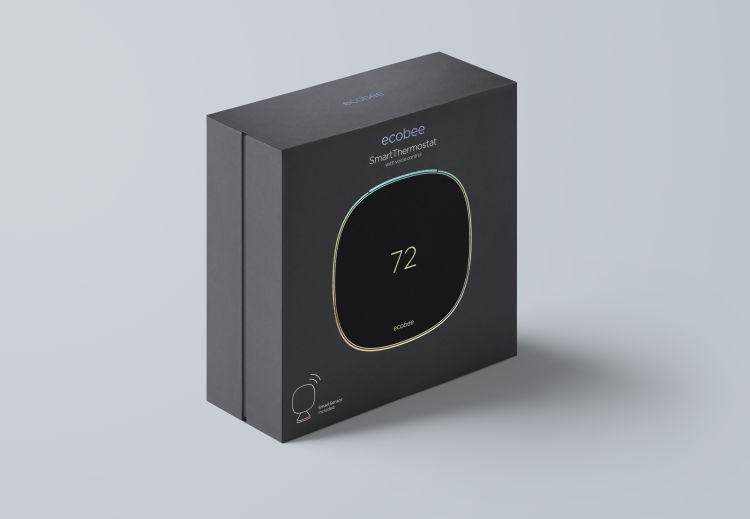
Despite all that appeal, it required a lot of raw materials like glue, paper, plastic, and cardboard, as well as processing time. A particularly nice design touch—the metallic accents used around the image of the thermostat on the cover—was achieved using little pieces of foil, which made recycling the box a bit more complicated than it needed to be. Around that time, we knew we needed to rethink our packaging and bring it in line with our overall environmental mission.
Reflecting on those days, ecobee’s Vice President of Creative and Design, Jonathan Hayes, says, "At the time, we considered that SmartThermostat package to be our best to date. And it was. But in retrospect, it was larger than it needed to be, used too much material, and was challenging to recycle. Since then, our guiding principles have evolved. We are still all about a great customer experience but have doubled down on our ‘less is more’ mindset.”
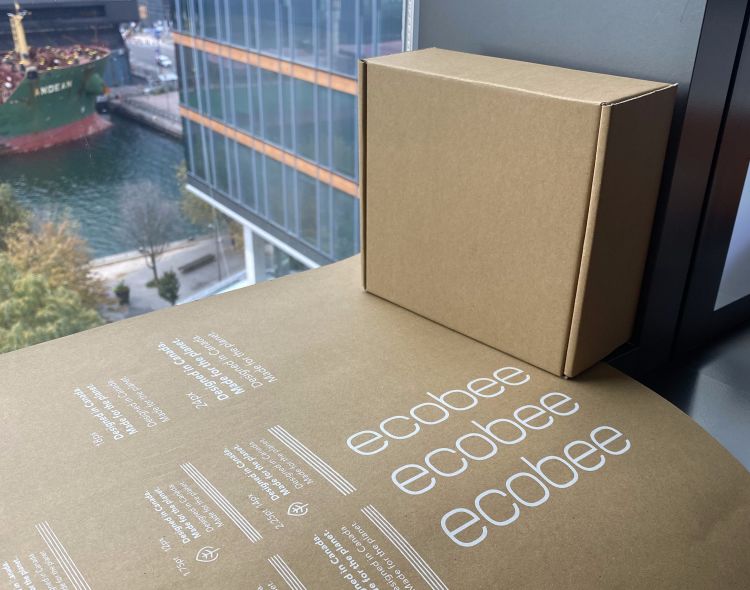
A new direction for ecobee and the planet.
SmartThermostat's 2018 release coincided with ecobee’s company-wide push to lighten its impact. The move toward tighter management of packaging design and vendors perfectly dovetailed with that goal.
When we caught up with Saba Sadegh-pour, a mechanical engineer who works on packaging and product design at ecobee, she said that the decision to bring packaging design more in-house has made her growing team nimbler and more mindful of packaging’s role in overall product design.
“With in-house resources, we now do more of our own packaging design. This also means we can get in earlier and make sure we’re reducing the packaging size and using more environmentally friendly materials from the get-go.”
By upping its game, first, by bringing more of the packaging design in-house and, second, by giving packaging a seat at the table early in the design process, in 2022, ecobee was able level-up the outcomes. With Mechanical Engineering, Industrial Design, and Packaging Design working collaboratively, the company was able to shrink the size of the packaging for its latest generation smart thermostats by 30% compared to the previous model, SmartThermostat. Packaging for the new devices, Smart Thermostat Premium and Enhanced, also used more recycled paper than the previous generation and featured many other more noticeable as well as tiny improvements.
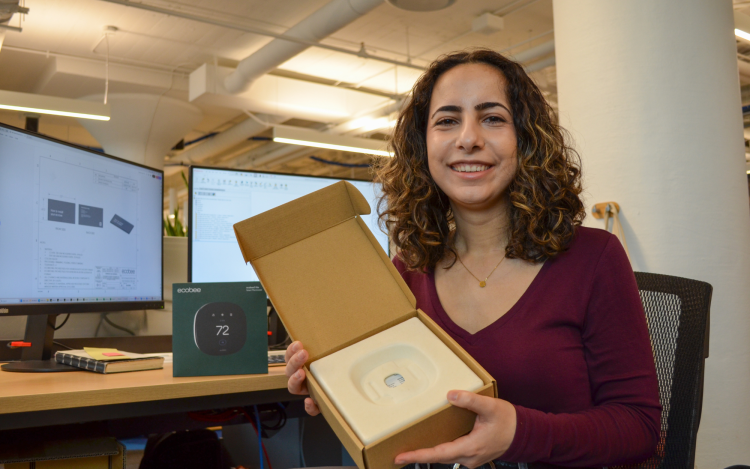
A more polished design.
The new packaging that has come out of our new mindset isn’t only different materially, it also incorporates some innovative features. In place of the SmartThermostat’s simple four-sided sleeve, the carton is now protected by a clamshell-style sleeve that opens to reveal something unexpected.
The glossy finishes and colourful foil of the previous generation’s box are gone in favour of a sleek minimalism. A sheer render of the thermostat, ecobee’s wordmark (also embossed on the top side), and the name of the product are all that front the packaging. Flipping over the box reveals a planet-positive message, smart home system badges, and an unassuming but inviting tab. Unfastening the tab loosens the clamshell, which reveals the highlight of the new packaging—18 very carefully arranged folds in the thin cardboard sleeve that unfurl to reveal a gorgeous Canadian landscape photograph printed on the inner sleeve.
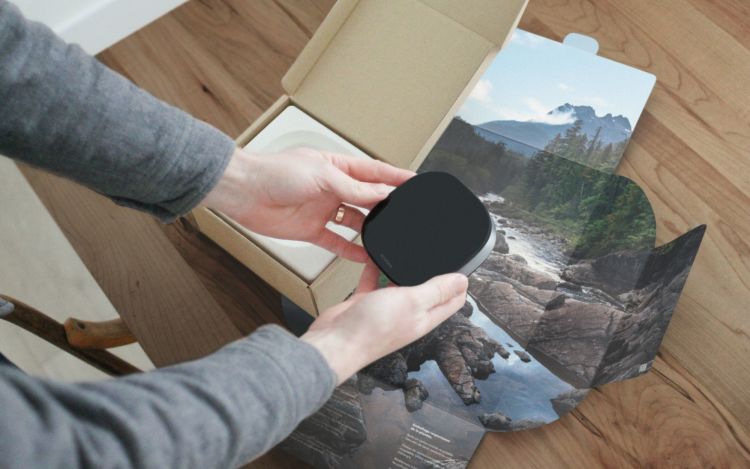
The sleeve contains a simple box made by folding corrugate (without additional glue and also free of dyes and bleach). A peek inside the box first reveals more changes and enhancements. The previous generation’s thick paper manual has been removed; in its place a quick-start guide provides basic information and directs users to the ecobee app to get started. From an ecological standpoint, the package’s “killer” feature are the two new trays made from potato starch that hold the thermostat and its components. Unlike most trays of their kind, they are not only recyclable but also compostable!
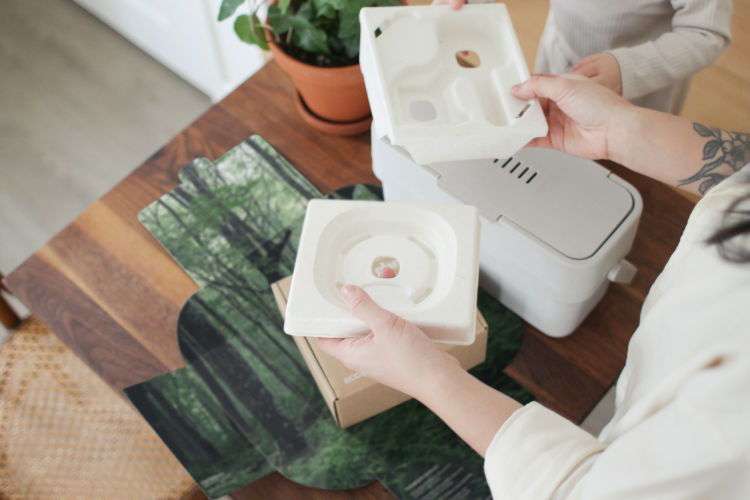
Zeroing out plastic.
The problem of plastic pollution has reached a critical magnitude, with up to 40% of plastic waste coming from packaging. According to the UN, 36% of all plastic produced is for packaging and Earth Day 2024 has called for a 60% reduction in plastic production by 2040.
At ecobee, the hard work of moving away from plastic is ongoing. Like with many tech products, the screws and wall plugs that come with ecobee smart thermostats used to come in a small, clear plastic bag. With Smart Thermostat Premium and Enhanced, ecobee transitioned to a paper “hardware kit.” The company is now looking to zero out the amount of virgin plastic used in its packaging over the next few years. That includes:
- the shrink-wrap that covers each package;
- the plastic film that protects the product’s display;
- and even the stretchy wrap that’s wrapped around pallets to protect products during shipping.

Less waste, more cost savings.
Redoubling its focus on packaging design unlocked not only changes in the size, style, and physical makeup of the packaging, it also brought ecobee more in control of its supply chain.
“The facilities where we build our products are in Malaysia, so it was very important to the team to find a packaging supplier there, too, to shorten and localize our supply chain,” said Sadegh-pour. The company found a Malaysian packaging supplier, and they’ve played an important role in helping ecobee operationalize its environmental objectives.
Sadegh-pour says that keeping track of where ecobee’s partners source their materials is a fun but challenging part of the job. She is glad to have a knowledgeable local partner to guide her through the Malaysian landscape.
“We make a point of prioritizing where we can make the most impact with the least amount of time and money. In the case of our partnerships in Malaysia, we want to support the local economy. Obviously, you want a lot of the raw materials that go into packaging to be sourced locally. But not everything is grown in Malaysia. So where possible, we try to source our materials from businesses already operating there which is good for the local economy and better for the environment,” said Sadegh-pour.
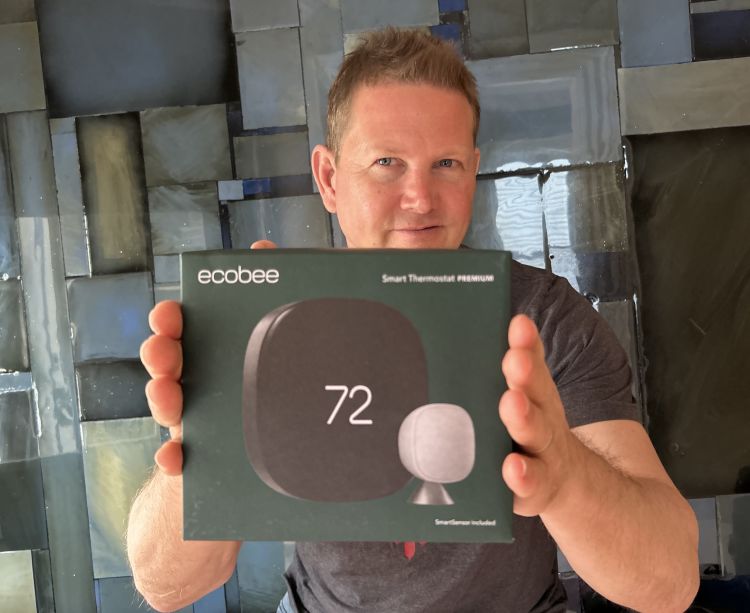
How ecobee’s products and packaging take shape.
Jonathan Hayes, ecobee’s Vice President of Creative and Design, says each iteration of product and packaging design is the result of a deep and extensive collaboration between people on various teams.
“The key is to make sure the relationship between what's happening from inside-the-device-out and from outside-in really meshes. So, the teams need to be completely in sync,” said Hayes, noting that this relationship later extends to packaging.
Hayes says industrial design tends to lead the way in establishing the shape of new ecobee products but getting from the first prototype or shape to something that’s ready to ship involves a complex interplay between many people on various teams.
“After we’ve come up with a potential size and shape for the product that we’re happy with, we start a back-and-forth between Industrial Design, Mechanical Engineering, and Hardware (i.e., electrical engineering),” said Hayes.
During this phase, the company is still trying out the details of the shape, and how that relates to the internal components. At every step, each team is trying to balance what’s best for the customer with what’s best for the environment. For instance, manufacturing might find a way to shrink a part or remove it altogether to lower cost and reduce the environmental impact.
“Once we have finalized the size and shape, we release 3D files to our manufacturing partner for production. At this point, the logical next step is packaging and graphic design,” said Hayes.
Hayes says there are always many micro-adjustments at this stage in the design process. For instance, during the development of Smart Thermostat Premium and Enhanced packaging, there was much discussion internally and with the company’s Malaysian partners to see how they could get the clamshell sleeve to fit “just right” around the corrugated carton. The challenge was finding how to make the sleeve loose enough that it wouldn't rip during unboxing but not so loose that it would look untidy.
What it all comes back to.
Like everything ecobee, its packaging practice is centered on balancing a great customer experience with the needs of the planet.
“Our customers shouldn’t have to choose between a great product with a premium feel and something that’s good for the environment. We should be able to engineer it to have both,” said Hayes.
Hayes says reconciling seemingly disparate goals—what’s best for the customer with what’s best for the environment—requires a continual process of purification.
For Hayes and the various teams involved with packaging, that means taking a holistic approach and understanding that packaging isn’t just there to protect the product or maximize sales. It’s more than that. It’s the start of the customer journey.
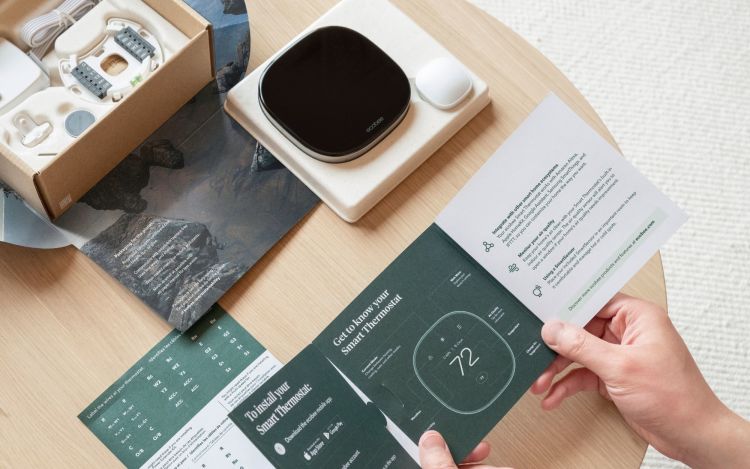
“Packaging is often that very first touchpoint, so we’re trying to deliver what’s best for the customer. Refining the experience takes the form of questioning. How does this unfold? Is it orderly? How does the sequence of opening the box fit into the greater whole, the customer’s experience of using ecobee devices and services?” says Hayes.
In practice, the unpacking experience, says Hayes, should provide a set of guardrails to help the customer along. That means rooting out any extraneous steps, information, and parts, because each presents an opportunity for the customer to go down the wrong path, which can waste resources and isn’t good for the environment.
Let’s be mindful.
When ecobee Citizen asked Sadegh-pour if she looked at the world differently since she started working on packaging at ecobee two years ago, she had a surprisingly forthright answer that revealed her passion.
“It’s actually really distressing when you see the sorts of products like cosmetics with elaborate packaging that you know cost more than the product itself, and it just irks you so much because you know it's all going in the garbage in five minutes.”
Despite the many laggards, the world is at the beginning of a revolution in environmentally conscious packaging that just years ago would have been unthinkable.
We don’t have to look very far for evidence of this shift. Led by the passion and know-how of young engineers like Saba Sadegh-pour, and executives like Dave Lynch and Jonathan Hayes, and the hundreds of talented and committed people at ecobee and its Malaysian packaging supplier, ecobee has transformed its packaging process in just four years.
Just imagine where we will be in another four.
Visit ecobee.com/recycling for more information on how to properly dispose of ecobee packaging and equipment.
Did you enjoy this article?
Thanks for letting us know!

